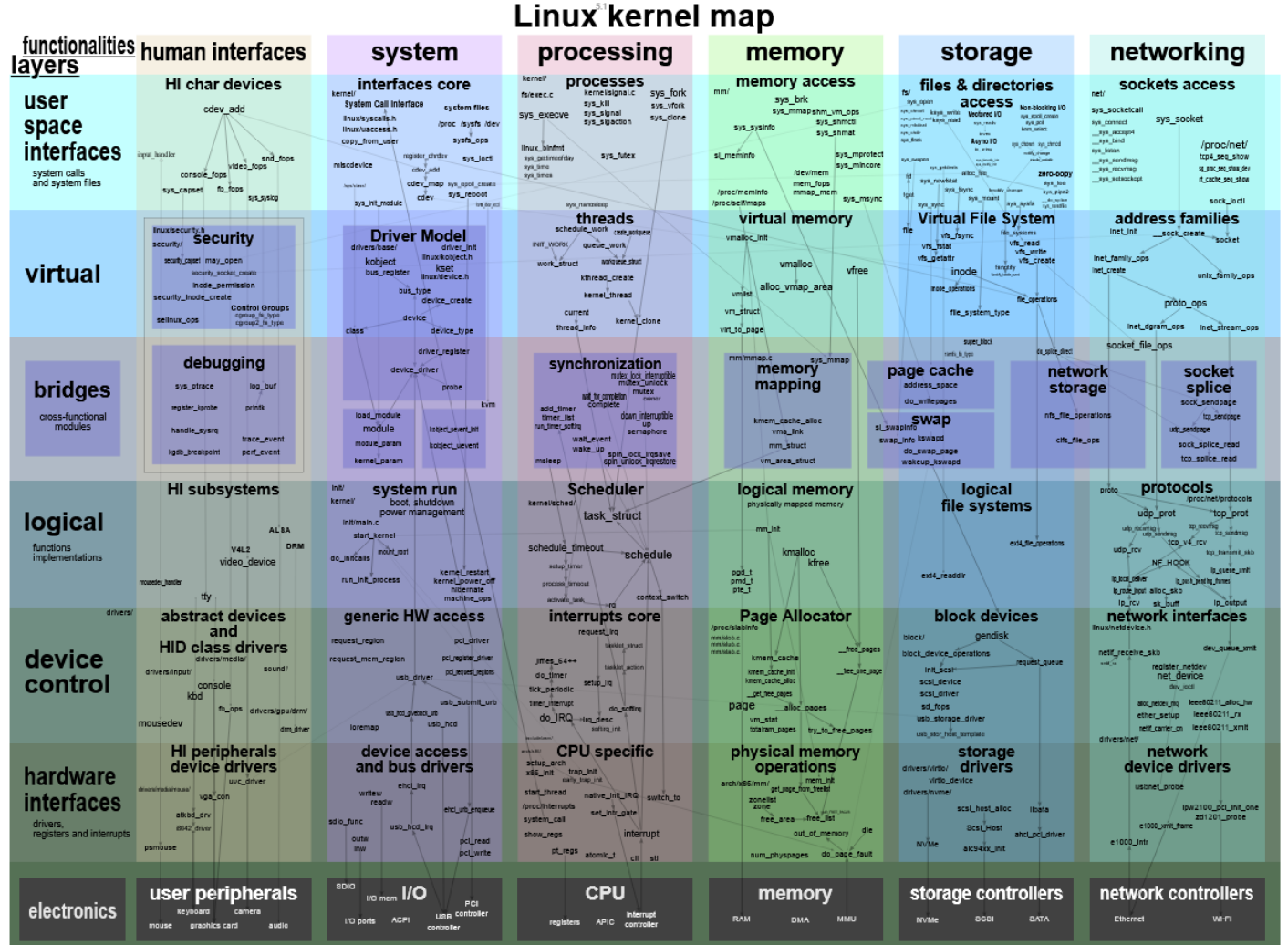Linux was created in 1994 by Linus Torvalds.
Linux at its core is the base for operating systems → the kernel.
The kernel is this monstrocity:

Linux in itself does not really do anything.
Not untill you build something on top of it
Linux distros
A Linux distribution, or distro, is a built up linux based operating system.
There are a TON of different distros, each made for their own purpose. Like mint-os which is build to make the transition from windows to linux easier because of its similarity, or kali-linux which is made for cyber security purposes.
Shell
A Shell serves:
- a command line interpreter
- a scripting language
Some shells are:
- sh (Start with
>$ sh) - bash (start with
>$ bash) - csh (start with
>$ csh)
to check what shell you use, you can write echo ${SHELL}
Commands input and output
Whenever you start a process(or application), it will send data over certain channels.
- channel 0: standard input (stdin) (keyboard, readonly)
- channel 1: standard output (stdout) (terminal, writeonly)
- channel 2: standard error (stderr) (terminal, writeonly)
- channel 3-… read and write actions
Redirecting
You can use certain operators to redirect the input/output of your process
command > file.txt writes to an existing file.txt
command >> file.txt writes to or creates file.txt
command 1> file.txt writes the stdout(1) to an existing file.txt
command > file.txt 2>&1 writes to an existing file.txt and adds the stderr(2) to the stdout
Piping
You can chain multiple commands by writing command1 | command2 a pipe(|) between commands.
Process return $?
You can use $? to return a status code.
grep "hello" file.txt
- If file exists:
echo $?→0 - if file exists and hello is not in file:
echo $?→ 1 - if file does not exist:
echo $?→